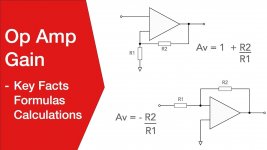Some say that Abba's first record was made in their own Polar studio.All the other albums were made there too...
Stig Anderson - Wikipedia
Some other guy tell about Metronome...I can hardly believe anyone now.
Stig Anderson - Wikipedia
Some other guy tell about Metronome...I can hardly believe anyone now.
Last edited:
1) C = S / ( d x e ) Where S is the surface of the plates, d the distance between plates, e the dielectric constant.
2) Breakdown voltage is in proportion of d.
Using 1) and 2) you end up at: The volume of a cap is in proportion of the energy it can store.
Looks to me that you've made a crucial assumption there but haven't supported it.
You appear to assume that the volume of the cap is simply the thickness of its dielectric multiplied by its area, ignoring the volume taken up by the electrodes. In reality some volume is taken up by the electrodes themselves and this proportion will likely vary with the working voltage.
The electrolytic cap has a dielectric which is a thin layer of aluminium oxide on the surface of aluminium foil. Seems a reasonable guess to me that the dielectric layer is very much thinner than the foil on which it grows in the case of lower voltage caps. On higher voltage caps the dielectric layer needs to be thicker so occupies a greater proportion of the cap's total volume.
This is nonsense. The copyright LABEL was "Polar". The studio was "Metronome" (now "Atlantis"). Then they build "Polar studio".Abba's first record was made in their own Polar studio.All the other albums were made there too...
Stig Anderson - Wikipedia
Metronome Studio, Stockholm Label | Releases | Discogs
Studio File: Atlantis Studios, Stockholm |
YouTube

Where is your logic?
As we speak about 100uF 300V and what is TYPICAL (in tube-vs-transistor) - we speak about consumer-grade audio.
Instead, high-end-grade capacitors of 22000 uF 100V appeared in expensive high-end Krell KSA50/ KSA100 amplifiers in 1983.
I am sure there were NO capacitors 22000 uF 20V in consumer-grade audio before 1981-1982.
At that time there were no consumer-grade tube amplifiers.
Sony Global - Sony Design - History - 1970s
Actually the tube substitution was made around 1973-1976. I own Trio/Kenwood unique receiver with TUBE schematic, typical tube interior and BJT transistors replacing the tubes, dated around 1975-1976. Stunning tube-like sound.
You are trying to compare 1970 consumer-grade tube with 1983 high-end solid-state.
This is absolutely illogical, unless your real task other than finding the truth.
The point is - "the most engineers" did not recognize the obvious difference in sound and did not make school-grade math in 1970-1980.
This thread is about opamps, take your nonsense somewhere else, you pollute enough threads with your rambling BS that you have no proof for. Start your own threads and keep the stupidity there.
I thought the same way, but in reality it works.
The resistance of 100 pF capacitor of feedback on 20 Hz is
79577471 Ohm = 79 MOhm.
It makes the any impact of 1 GOhm resistor near zero to AC.
PCB resistance or dust conductivity has nothing here to compete with 1 GOhm resitor - it is here just to balance the DC drift and DC offset. It can be larger or smaller - for DC offset it does not matter. But it can not compete in AC with 100 pF capacitor. Thats it.
As for noise - yes there can be issues, for shure. But this is a headphones amplifier just to show the core design concept. This is not for phono. For phono first stage - use 100MOhm...1 GOhm and larger feedback mica capacitors, up to 1000 pF, no problem, but the sound quality will be slightly worse, with small "solid-state" coloration.
Depending on frequency that 100 pF cap will have as much as 100 uV of noise, a lot.
Trying to make an amplifying circuit with capacitors instead of resistors really requires zero bias inputs. Parametric amps that can do this are quite rare and obsolete today. The leakage currents of a jfet or mosfet input will charge those small caps to the rails pretty quickly.
Conceptually using caps instead of resistors for AC dividers is not new and is valid in some cases. But it can be quite difficult and the hidden stray caps become a real issue. one big one is the change in input C of active devices with a change in the voltage across them. If the Cin changes .5 pF (not unknown at all) and your divider is 100 pF then you start with a built in .5% HD.
Nope. You are overestimating the problems.Conceptually using caps instead of resistors for AC dividers is not new and is valid in some cases. But it can be quite difficult and the hidden stray caps become a real issue. one big one is the change in input C of active devices with a change in the voltage across them. If the Cin changes .5 pF (not unknown at all) and your divider is 100 pF then you start with a built in .5% HD.
1). The proper formula for OpAmp gain non-linearity in this worst case:
705.5 pF /705 pF - 1.0 = 0.0007 = 0.07%.

2). You do not take into account the negative feedback itself, around 40...60 dB, and its linearization feature.
3). But as I really heared the difference in (-) and (+) inputs for signal, there will be some difference due to input capacitance's non-linearity and other side effects, but the HUGE profit from clean cristal tube-like sound is much bigger than this very thin difference.
4). Actually it worked perfectly even with combination 60 pF/ 24 pF capacitors with gain around 3.0 for my headphones amplifier.
Last edited:
Conceptually using caps instead of resistors for AC dividers is not new and is valid in some cases.
For instance charge amplifiers work just fine. A 50pF microphone capsule with 5pF feedback (G = 11) actually works spectacularly well.
We should still need a high value resistor ever the feedback cap if we want to ever discharge it and give a minimal dc bias to the op amp ,
Of course 5G worked quite well.
for condenser with a 20mv max output, that equals 40pA of bias...Some op amps can do with a lot lower bias, but i remember that valves were more natural amplifiers for condenser mikes with their ag capacitance.Of course 5G worked quite well.
for condenser with a 20mv max output, that equals 40pA of bias
No that is not true there is no net DC current in the condenser, there can't be it's a capacitor, the bias is only for the FET leakage.
I said max output...so it was dc...I just looked on google to see what's the average output of a condenser microphone , but i was wrong anyway...you only get the max offset output with 5Gohms, but then 5 giga is higher than the air resistance...I'm lost.
Air resistance is way higher than 5G otherwise static electricity would be a non-issue!
You have only 1...1.5 mm between a dip op-amp pins and actually about 0.76 mm at the standard DIP package output. .In the UK with that humidity you might get even lower resistance than 5 G...I don't wanna think of small smd footprint...You might be right in California though!
Last edited:
You have only 1...1.5 mm between a dip op-amp pins.In the UK with that humidity you might get even lower resistance than 5 G...I don't wanna think of small smd footprint...You might be right in California though!
Nope, not even 1fA from the air, the PC board is another matter.
Of course. You are right. This is one of the main reason why condenser microphones have so clean sound - no skin-effect in AC current, no skin-effect in feedback circuits, no passsive loss (R resistive) of information in feedback circuit etc.For instance charge amplifiers work just fine. A 50pF microphone capsule with 5pF feedback (G = 11) actually works spectacularly well.
"TI Designs - Precision: Verified Design
Single-Supply, Electret Microphone Pre-Amplifier
Reference Design 2015."
tidu765.pdf
View attachment tidu765.pdf
All needed formulas are there.
Formulas were known for long time.
They use 15pF capacitor.
When I said "nobody use it in audio" I mean "in general audio", for sure.
Last edited:
Still did not get it?There's another topic about your skin effect...
The MOSFETS and tubes are better in sounds because they are voltage-controlled. This means there is no uncontrollable skin-effect on their input (grid, gate), because the AC current is very low.
Modern CPU and GPU are totally CMOS now because CMOS is better (voltage) controlled with predictable behavior, because there is no non-linear skin-effect in their input current (instead of BJT circuits).
You can not get decent musical sound without fight with nonlinear skin-effect in all his places.
- Home
- Source & Line
- Analog Line Level
- Discrete Opamp Open Design